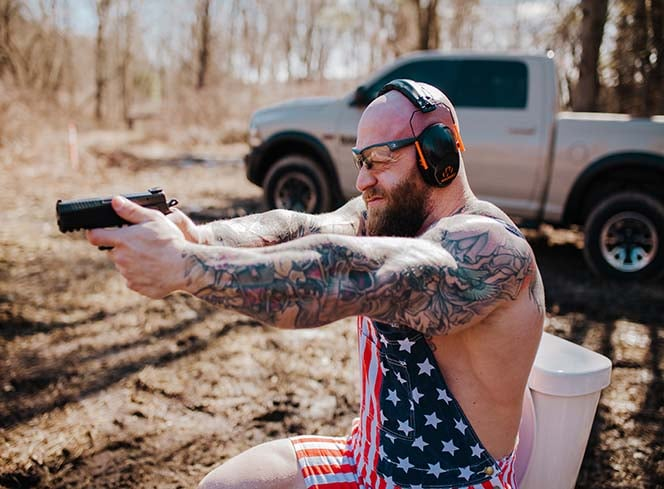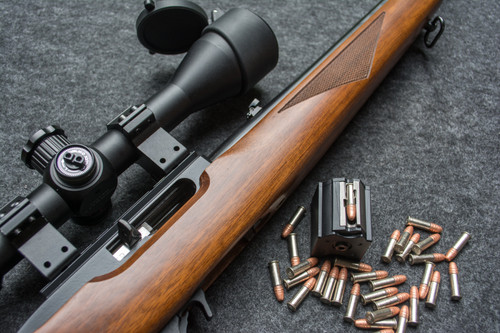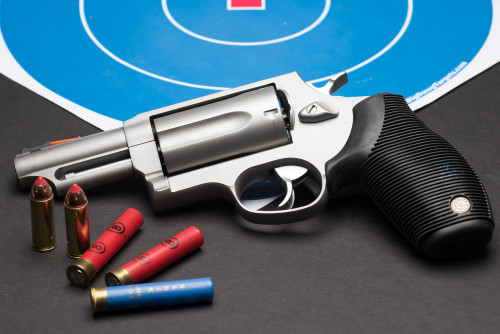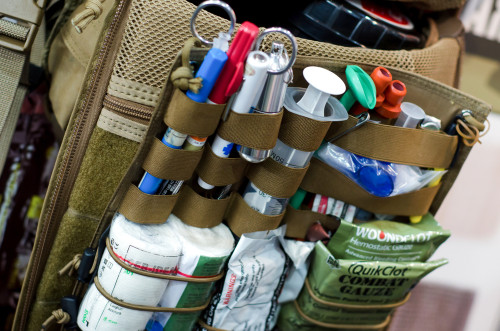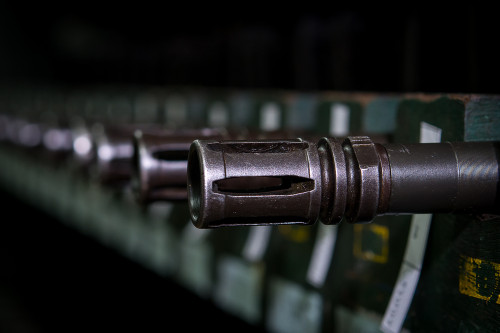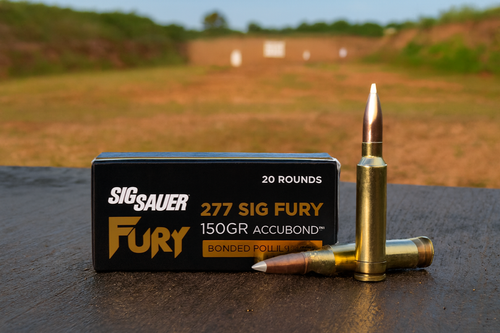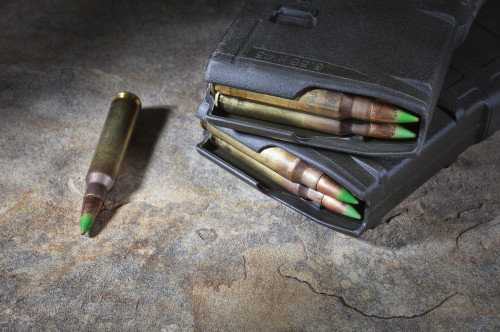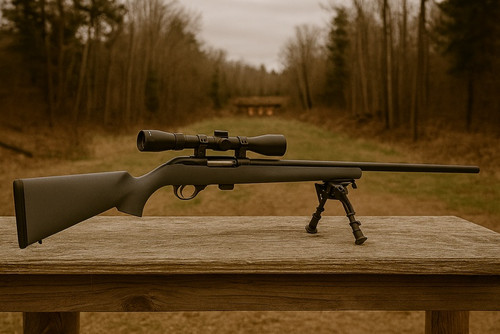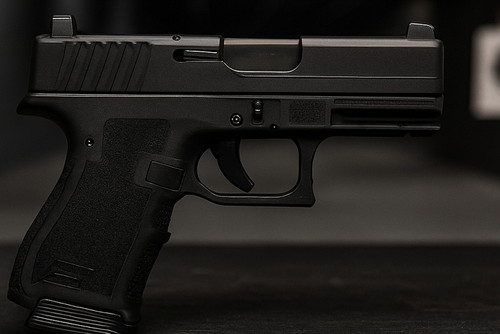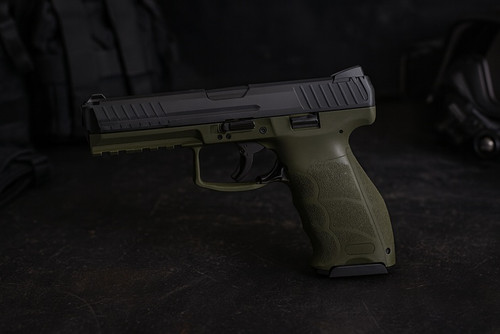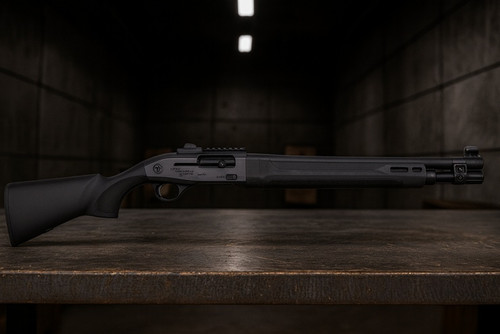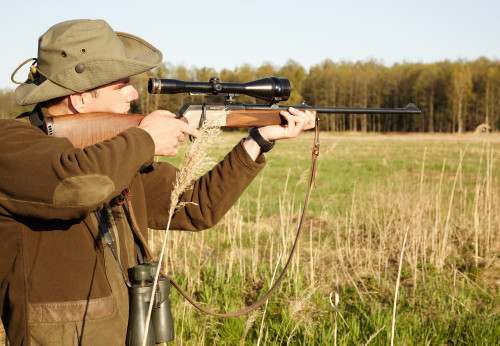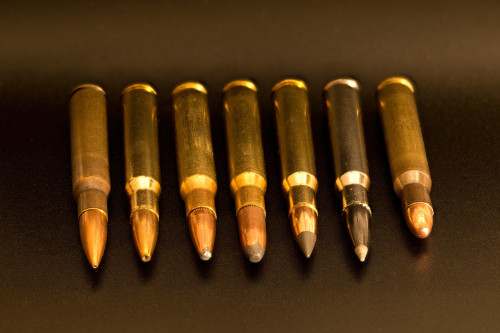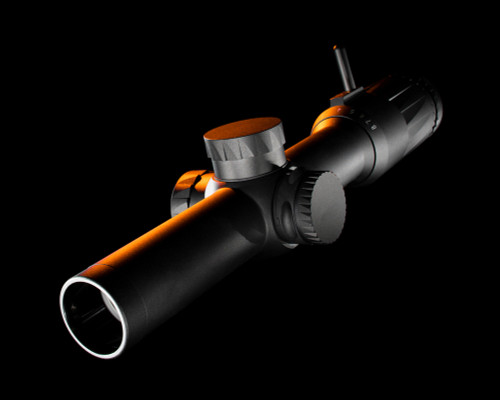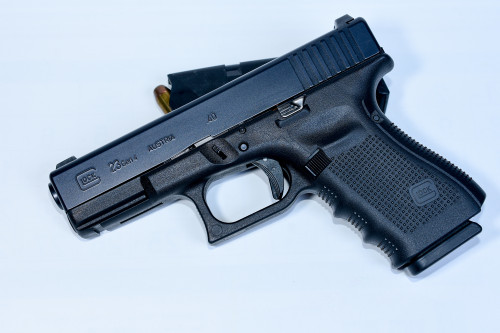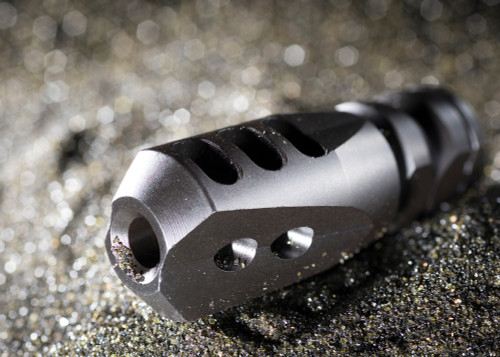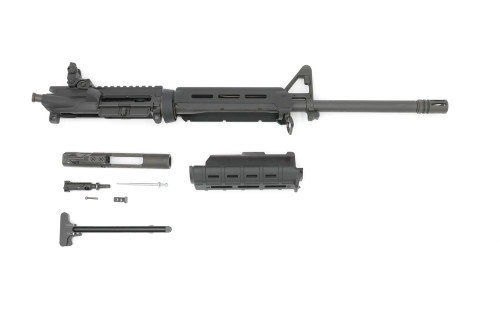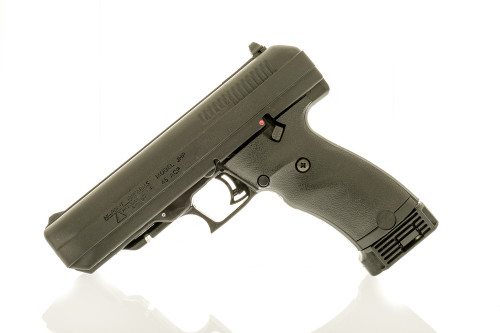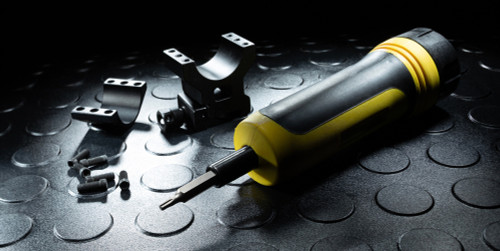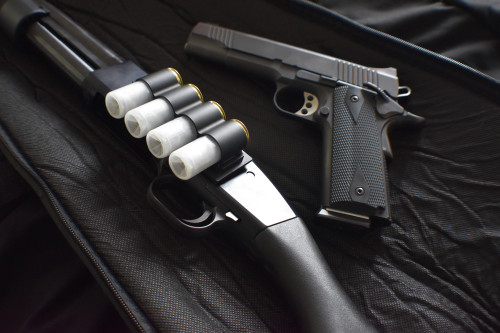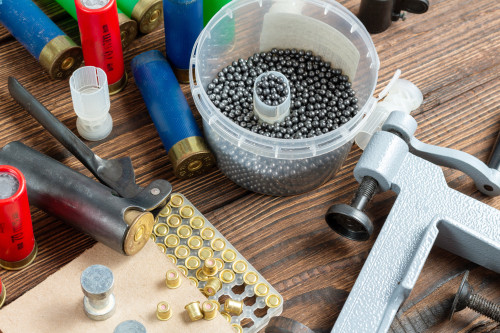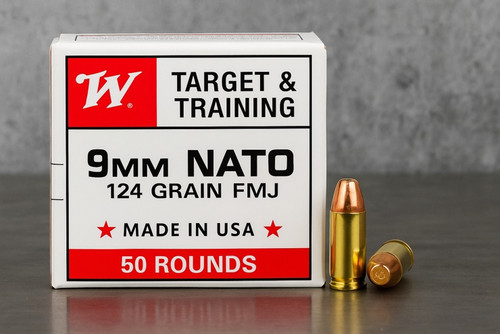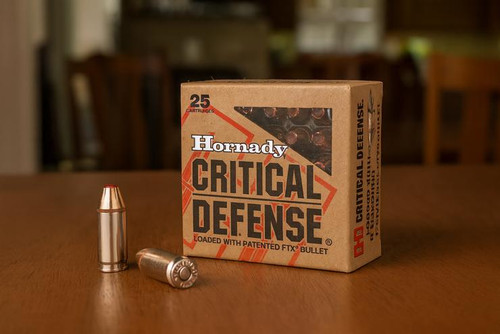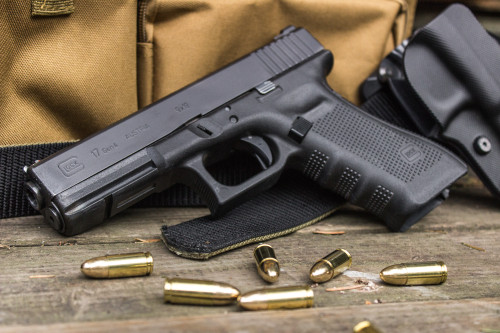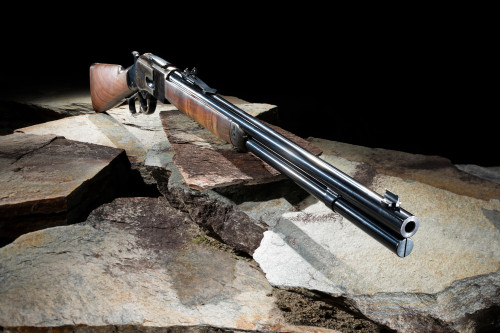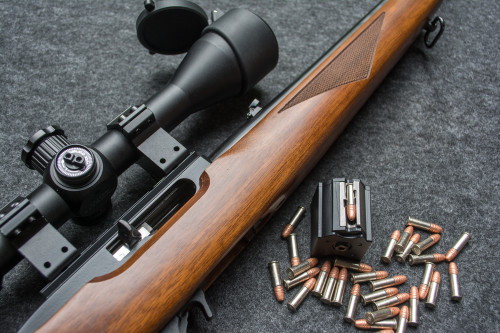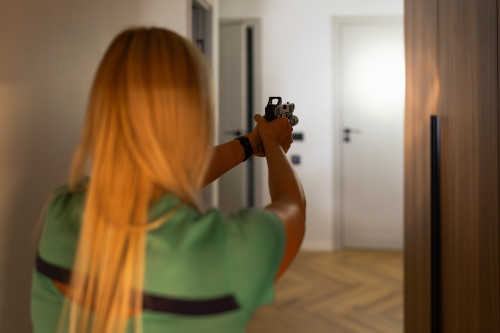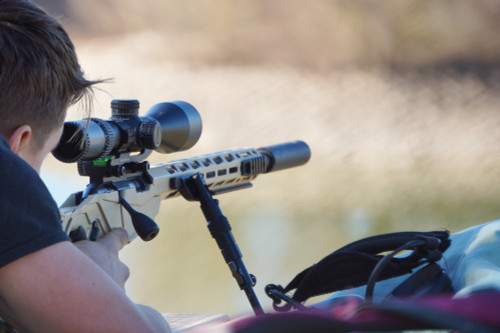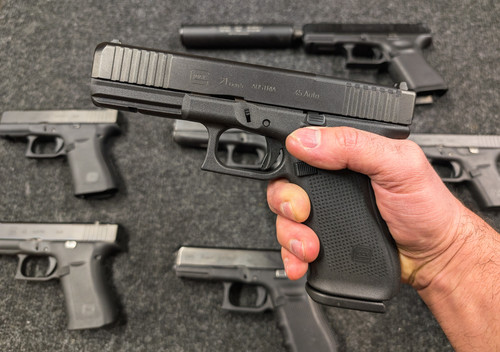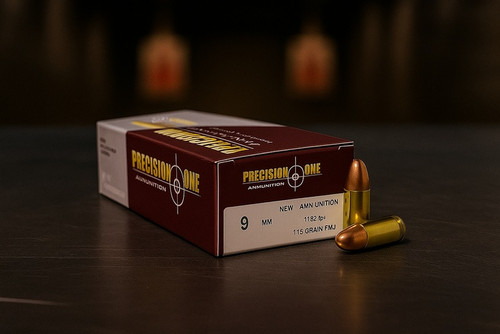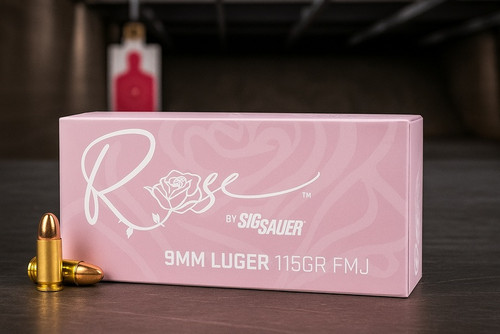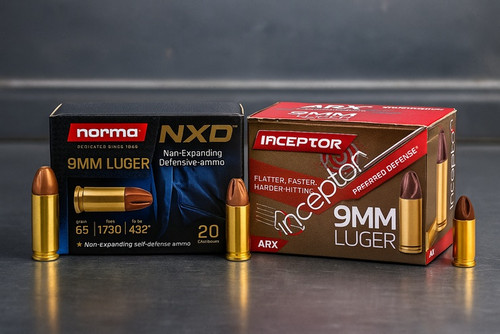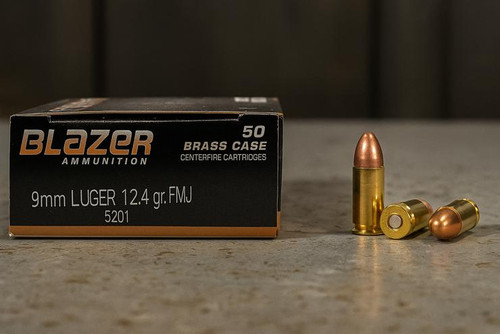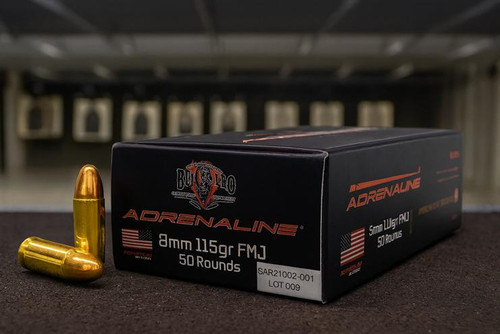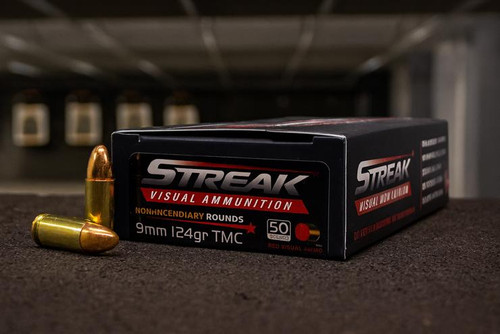The bolt carrier group (BCG) is the heart of an AR-15, responsible for feeding, firing, extracting and ejecting spent rounds. With so many options available, choosing the right one can be overwhelming.
The BCG handles significant stress, withstanding the explosive force generated just inches from your face each time you pull the trigger. A quality BCG ensures this critical part works flawlessly so you can focus on firing accurately.
On the market, you’ll find lightweight BCGs for competition rifles, adjustable gas key BCGs to tune cycling rates and models coated in slick finishes that clean up easily. We took on the tough job of evaluating top options to help you invest wisely.
How We Tested AR-15 BCGs
We thoroughly test durability, performance under stress and functionality to provide reliable recommendations. Our evaluation includes:
-
Analyzing reported durability data from various rifles over time to assess long-term performance.
-
Simulating rugged use without maintenance to evaluate operational resilience.
-
Reviewing reliability data when using suppressors to ensure consistent cycling.
-
Verifying that all bolt carrier groups meet or exceed industry Mil-Spec standards.
-
Integrating magnetic particle inspection findings to confirm structural integrity across multiple sources.
This allows us to spot potential weak points. Our team draws on backgrounds in the military, competitive shooting and gun shops to synthesize extensive research into detailed analysis.
Reviewed Bolt Carrier Groups
1. BCM Mil-Spec BCG - Best Overall
Pros:
-
Fully mil-spec compliant
-
Individually MPI & HPT tested
-
Test-fired for functionality
Cons:
-
None
The BCM Mil-Spec carrier is trusted by enthusiasts and military professionals alike for its flawless performance.. Manufactured to exacting specifications, BCM subjects every component to rigorous quality control processes, ensuring long-lasting performance that meets the demands of real-world use.
With a reputation built over decades the BCM Mil-Spec BCG performs reliably across various configurations, from basic 16” barrels to short-barreled CQB rifles. Its straightforward design prioritizes reliability over gimmicks or unnecessary features. Reliability takes priority over aesthetics or frills.
Users praise the BCM for its consistency and longevity. The phosphate finish resists fouling and corrosion even under sustained fire. Properly staked gas keys, magnetic particle inspection testing and high-pressure testing validate this BCG’s resilience. These “boring” mil-spec essentials ensure that its sturdy construction withstands punishing operational environments.
The BCM Mil-Spec sets the benchmark for out-of-the-box functionality. While costing less than exotic contemporaries, it outperforms them through meticulous fabrication methods backed by BCM’s reputation. This BCG’s sterling record cements its status as a go-to recommendation.
2. Rainier Arms Match Grade BCG - Best Nitride
Pros:
-
Nitride coated for reduced friction and easier cleaning
-
MPI & HPT tested for reliability
-
Enhanced extractor spring for improved ejection
Cons:
-
Reports of shallow gas key staking
The Rainier Arms Match Grade BCG aims to improve on the mil-spec formula by upgrading materials and coatings. Utilizing 9310 steel for the bolt and 8620 steel for the carrier, Rainier starts with a durable foundation of metals. To simplify cleaning they added an erosion-resistant nitride finish.
Nitriding not only protects against corrosion but also reduces friction for slick long-term operation. The smooth nitrided surface makes it harder for residue to stick, ensuring consistent function. even under sustained fire. To enhance reliability, Rainier includes an extra-power extractor spring to prevent ejection failures.
This BCG’s aggressive styling and unique serration cuts appeal to competitive shooters who prioritize form alongside function. Beyond aesthetics, Rainier designed this BCG to exceed Mil-Spec standards, with magnetic particle inspection and high-pressure testing validating its structural integrity.
Blending enhanced materials and manufacturing processes, the Rainier Arms Nitride BCG delivers exceptional longevity. A slick nitride coating eases maintenance while an upgraded spring prevents malfunctions. Extensive individual testing confirms its performance exceeds mil-spec. Balancing improvements with affordability makes this BCG a wise investment.
3. WMD Nickel Boron BCG - Best Nickel Boron
Pros:
-
Easier cleaning due to Nickel Boron coating
-
Visually appealing silver color
Cons:
-
Color may darken with extensive use
Nickel boron coatings reduce friction between components for noticeably smoother cycling. The slick surface also simplifies cleaning by preventing carbon fouling from adhering. Nickel boron’s natural lubricity enhances reliability. While all nickel boron BCGs share these traits, the WMD Guns variant stands above most competitors.
The WMD nickel boron BCG features a vibrant silver finish that stands out inside the receiver. While some may consider aesthetics superfluous, the striking hue provides visual confirmation of lubricant coverage. As an added bonus, nickel boron wears evenly, retaining its handsome appearance after extensive firing.
While range use slowly darkens its complexion, the coating’s low friction properties remain unaffected. Smooth cycling continues without hindrance. Competitors and training-focused shooters praise nickel boron for its ease of maintenance. This advantage significantly reduces cleaning downtime, allowing more rounds to be fired through the range.
The WMD Guns Nickel Boron BCG offers an optimal balance of form and function. Slick lubricity improves reliability while decreasing cleaning requirements. Strong visual appeal enhances the shooting experience. For AR builders seeking an upgrade offering real-world utility at a reasonable price point, it delivers on all fronts.
4. Toolcraft Nickel Boron BCG - Best Value
Pros:
-
Easy to clean Nickel Boron coating
-
Every BCG undergoes MPI testing
-
Outstanding value for the price
Cons:
-
None
The Toolcraft brand enjoys prestige among AR-15 enthusiasts for manufacturing exceptional BCGs that rival those of far costlier designs. They build a reputation on quality components, rigorous testing and prices that stretch a dollar. Their Nickel Boron BCG exemplifies that ideal value equation.
First-time builders and seasoned experts alike rely on the Toolcraft Nickel Boron BCG for its flawless performance straight out of the box. The Nickel Boron coating offers two key advantages: simplified cleaning and smoother cycling.. By resisting carbon fouling and debris, Nickel Boron simplifies maintenance after range sessions. The low friction finish also enhances reliability by ensuring consistent slide action and chambering.
Toolcraft conducts magnetic particle tests on each unit to screen for microscopic flaws that are undetectable by the human eye. This quality control step confirms structural integrity before shipment. Rigorous inspection protocols build confidence in the product's durability.
When you balance exceptional construction standards and quality assurance measures with an affordable mid-range cost, the value proposition becomes clear. The Toolcraft Nickel Boron BCG punches far above its weight class by delivering premium performance and features without the premium price tag.
5. PSA Mil-Spec Phosphate BCG - Most Affordable
Pros:
-
Meets mil-spec standards
-
MPI tested for durability
-
Highly affordable and reliable
Cons:
-
Matte phosphate finish less refined
The phosphate-finished Mil-Spec BCG from Palmetto State Armory sets the foundation for budget-friendly builds without sacrificing baseline quality or reliability. As one of the most proven and enduring BCG coatings, phosphate provides a gritty textured surface highly resistant to corrosion. Its matte gray finish lacks the flash and dazzle of trendier alternatives but gets the job done.
Despite the bargain price point, PSA maintains fundamental Mil-Spec benchmarks in materials and construction. Proper steel alloys, magnetic particle inspection testing, gas key fastener staking - the essentials remain consistent with high-end brands. This crucial attention to detail ensures durable performance in the harshest conditions.
While the surface finish may wear faster compared to pricier options, the phosphate coating achieves its primary objective of preventing rust and oxidation. Form follows function. For shooters who care more about affordability and reliability than aesthetics, this no-frills BCG checks all the boxes.
After thousands of rounds have been cycled through PSA BCGs, they continue running strong. The PSA Mil-Spec Phosphate BCG delivers on the promise of battlefield-grade dependability. While cheaper BCGs exist, this one strikes the ideal balance of cost savings and duty-ready specifications.
6. Walker Defense Ti BCG - Best Lightweight
Pros:
-
33% lighter than traditional steel BCGs
-
Advanced materials like Titanium and DLC for durability
Cons:
-
Higher cost compared to standard BCGs
The Walker Defense ultra-lightweight Titanium BCG sets a new high bar for cutting-edge materials science. Meticulously engineered to shed every possible ounce, it almost feels like holding a prototype stolen from a secret government project. A third lighter than traditional bolts and crafted from space-age metals, this BCG offers a glimpse into the future of AR-15 innovation.
Starting with the foundation, Walker CNC machines the carrier from a solid block of Grade 5 Titanium rather than the typical steel. Chosen for its extraordinary strength-to-weight ratio, Titanium provides featherweight properties without compromising durability. In fact the Titanium carrier hardens under heat and abuse. It then receives a Diamond Like Carbon finish that further boosts surface hardness to resist wear and corrosion.
This BCG also incorporates a Nickel Boron coated bolt that offers easier cleaning and better heat dissipation. The Nickel Boron coating ensures smooth cycling while the open bolt design aids in cooling. Together these materials and engineering considerations make for a fast-cycling, reliable and resilient BCG.
Serious competitors immediately recognize the split-second advantages offered by the Walker Defense BCG. Reduced reciprocating mass not only decreases felt recoil but also allows for faster target reacquisition. During rapid fire, fractions of a second decide matches. This BCG captures every possible millisecond.
7. Rubber City Armory Titanium BCG
Pros:
-
Lightweight at 7.8 oz
-
Durable Titanium build
Cons:
-
One of the priciest options on the market
Constructed from aircraft-grade Titanium, the Rubber City Armory (RCA) Titanium BCG offers best-in-class durability and resilience. Titanium's inherent properties as a lightweight yet extremely hardy metal make this BCG uniquely suited for high-round-count situations. At just 7.8 oz, it cuts a significant amount of weight off a rifle compared to traditional steel BCGs.
This featherlight construction pays dividends in the form of reduced felt recoil and less shooter fatigue during prolonged shooting sessions. By limiting rearward mass the RCA Titanium BCG enables faster follow-up shots as the rifle rebounds back on target quicker after each trigger pull. The lightweight carrier also cycles at higher velocities which further speeds up operation.
An added benefit of Titanium construction comes from its ease of maintenance. The material resists fouling adherence far better than steel, resulting in less debris accumulation even after firing hundreds of rounds in adverse conditions. Users report the RCA Titanium BCG still appears clean after extensive range time. Should carbon build up, a quick wipe down returns it to like-new condition.
While the RCA Titanium BCG costs nearly triple some budget options, its best-in-class longevity and low-maintenance properties justify the price for serious shooters. If you demand the ultimate in resilience from your rifle's operating system, this titanium masterpiece delivers in spades.
8. Brownells Lightweight BCG
Pros:
-
Reduced weight at 8.2 oz helps decrease recoil
-
More affordable lightweight option
Cons:
-
Some coating options are often out of stock
Brownells offers its lightweight BCG as a value-focused alternative for AR builders seeking reduced mass without the high price tags associated with exotic Titanium models. Machined from durable steel, the Brownells Lightweight BCG tips scales at 8.2oz, shaving over 3 ounces off mil-spec BCGs.
The minimized rearward reciprocating weight contributes to decreased felt recoil, especially beneficial in lightweight carbine builds. Since less mass slams into the buffer with each shot, the rifle rebounds onto target faster for quicker follow-up shots. The carrier itself also cycles at enhanced velocities for potentially improved rates of fire.
Available with different finish options the Brownells Lightweight BCG allows budget-focused shoppers to add visual flair. Whether a basic nitride coating or flashier nickel boron or titanium nitride, the choice of shades ranges from basic black to brilliant gold. While inventory fluctuates, signing up for notifications alerts shoppers the moment their desired finish becomes available.
For shooters building their first AR-15 or upgrading an existing rifle on a budget, the Brownells Lightweight BCG delivers reduced mass at an affordable cost. Performance matches that of pricier models at a fraction of the investment. An outstanding option for the value-focused.
9. KAK Industry K-Spec BCG
Pros:
-
Vents gas downward, reducing blowback
-
Sand Cutting rails help divert debris
-
Dual ejector claws for reliable ejection
Cons:
-
Specialized design might be excessive for casual shooters
The KAK Industry K-Spec BCG was purpose-built to address a common issue plaguing AR-15 pistols and short-barreled rifles - excessive blowback gas venting back into the shooter's face, especially pronounced when firing suppressed. To divert gas down and away rather than rearwards, the K-Spec BCG features a unique ported design that vents waste gasses down into the magazine well, away from the operator.
This proprietary gas venting system significantly reduces felt concussion ensuring improved shooting comfort. Less gas also means lower fouling accumulation on the bolt and carrier itself, enhancing reliability. Further aiding cleanliness are debris shedding "sand cuts" along the carrier rails that channel fouling particles into non-critical areas.
An additional proprietary feature KAK designed into the K-Spec BCG is dual ejector claws to forcibly kick spent casings clear of the rifle. Aggressive ejection prevents extraction issues common during rapid fire strings. While optimized for suppressed CQB style firearms, the K-Spec BCG's enhanced venting properties benefit any AR-15 build.
The KAK K-Spec BCG's specialized functionality does command a slight premium over standard BCGs. However, for AR pistols or compact defense firearms, the gas diversion and debris management properties justify the added cost by reducing blowback and improving practical accuracy.
10. Bootleg Adjustable Carrier
Pros:
-
Adjustable gas key allows for fine-tuning
-
Great for short barrel suppressed builds
Cons:
-
More parts that could potentially fail
The Bootleg Adjustable Carrier grants shooters unparalleled control over gas regulation directly at the BCG instead of relying on adjustments only at the gas block. This intelligent design incorporates a gas adjustment knob allowing the user manually fine-tune cycling rates to optimize function.
By rotating the knob, shooters can precisely bleed off gas through one of four preset positions to regulate blowback based on the ammunition load being fired. The adjustable carrier ensures only the required amount of gas is channeled into cycling the rifle. This prevents jams resulting from overgassing while reducing recoil for faster shot recovery.
An integrated hex adjustment tool stored in the bolt carrier supports quick tuning. The carrier also features a last round bolt hold open notch to lock the bolt rearwards when the magazine empties. Ideal for competitive shooters running hot loads, this BCG optimizes both reliability and split times. It also helps manage increased gas blowback inherent to suppressed CQB rifles.
11. Sharps Rifle Co Extreme Performance BCG
Pros:
-
Made from S7 tool steel for exceptional durability
-
DLC coating provides a hard, low-friction surface
Cons:
-
Some proprietary parts might complicate repairs or replacements
Constructed to exacting standards for Special Operations use, this BCG showcases aggressive engineering starting with its proprietary Relia-Bolt technology. Stress analysis reveals the bolt lugs endure significant shear forces that can cause failure in cheaper BCGs.
To address this, Sharps designed a bolt that redirects these forces uniformly across the locking lugs, bolstering strength. Precision CNC machined from S7 tool steel and finished with a low-friction Diamond Like Carbon (DLC) coating, this BCG practically bristles with ruggedness ready for hard use.
The DLC finish, chosen for its extreme hardness rating, provides a slick lubricious surface. This technology prevents carbon and debris from sticking,, ensuring smooth cycling even under sustained rapid fire. To prove its mettle the test protocol subjected the XPB to over 2000 consecutive rounds across multiple barrels, hundreds suppressed, without any cleaning or lubrication.
It emerged from this punishing gauntlet unfazed. Sharps stands behind the XPB with a lifetime warranty against defects or workmanship errors. While expensive, it significantly outlasts cheaper BCGs, delivering exceptional value for professionals who rely on their rifle daily.
Full Auto vs Semi Auto BCGs
A common misconception in the AR-15 world is that full-auto rated BCGs enable automatic fire in semi-auto rifles. Rest assured, dropping an M16 rated bolt carrier group into your compliant rifle does not magically unlock machine gun mode.
On full-auto M4/M16 machine guns, an extra lug on the rear of the BCG interacts with the auto sear, enabling multiple rounds per trigger pull. This extended lug pushes down on the auto-sear release, allowing continuous firing as long as the trigger is held. However, in semi-automatic platforms, this lug sits idle and has no impact on the function.
Traditionally, full-auto BCGs featured heavier weights (9.5-11.5 oz) and slightly longer dimensions compared to semi-auto versions which were typically 8.5-9.5 oz. The increased heft and proportions of the full-auto design enhance durability and reliability. Consequently, most manufacturers have universally adopted these full-auto specifications even for civilian semi-auto models.
Given minimal cost differences today between full and semi-auto BCGs, we strongly recommend opting for the full-auto configuration regardless of the rifle firing mode. The heavier mass and dimensions enhance component lifespan and reduce potential malfunctions.
How to Choose a Bolt Carrier Group
“Mil-Spec” serves as the baseline standard for properly constructed BCGs. However you shouldn't assume all mil-spec BCGs automatically indicate stellar quality. Carefully inspect the materials and features of any BCG claiming the mil-spec label to validate its credibility.
The bolt itself should be precisely machined from exceptionally durable Carpenter 158 steel while the carrier uses heat-treated 8620 steel for the best combination of strength and fracture resistance.
Quality coatings like nickel boron or nitride not only enhance protection against corrosion but also significantly improve cycling and function. Such treatments greatly reduce friction and fouling accumulation compared to traditional phosphate finishes.
Thorough magnetic particle inspection (MPI) and pressure testing validate structural integrity and resilience under firing loads. Together, these tests confirm freedom from microscopic flaws that could lead to cracks or material failures.
When selecting a BCG, consider your specific needs and use case. Research specialized coatings that better resist fouling for high-volume shooters. Invest in full testing benchmarks for duty or self-defense applications where reliability is paramount.
Why Use A Lightweight BCG?
The lightweight BCG trend accompanies the larger fad favoring lighter, and leaner AR-15 builds focused on maneuverability and speed. Shedding ounces not only enhances handling for faster target transitions but also allows for more comfortable carry over long distances.
The basic physics of momentum explains how a low-mass bolt carrier group effectively reduces felt recoil during firing. With less mass slamming rearwards against the buffer upon firing, the overall momentum generated through the recoil impulse decreases. Lower recoil momentum enables the shooter to more quickly get back on target for faster follow-up shots.
Additionally, a lighter carrier cycles back and forth at higher speeds. While this rapid velocity can be detrimental in direct impingement rifles, when paired with an adjustable gas block, it significantly enhances the potential rate of fire. However the accelerated action may increase wear on certain components over high round counts.
Purpose-built for competition and tactical applications where fast firing is essential, lightweight BCGs truly shine when matched with tuned buffers and springs to ensure proper functioning. Make sure to balance these specially configured components to maximize performance.
Final Thoughts
Choosing the optimal bolt carrier group for your needs and budget is critical to maximize your AR-15's performance. Whether you desire an affordable mil-spec model or exotic Titanium race gun component, understanding the pros and cons of each option helps narrow selections.
Invest time upfront selecting durable coatings and materials to avoid expensive upgrades down the road. A quality BCG ensures your rifle runs flawlessly for years to come.
Frequently Asked Questions
What is the key benefit of a Nickel Boron BCG?
Nickel Boron BCGs make cleaning much easier thanks to an ultra-slick finish that resists carbon fouling adherence. This coating also reduces friction which enhances reliability.
Why are lightweight BCGs becoming more popular?
Lightweight BCGs are trending as shooters continue pushing the envelope for compact and fast-handling AR-15 builds. By removing ounces, lightweight BCGs make rifles more maneuverable.
What testing standards should I look for in a BCG?
Seek out BCGs individually tested via magnetic particle inspection (MPI) and pressure tested to ensure they are free from defects. These validate structural integrity.
Can I use a full-auto rated BCG in my civilian AR-15?
Yes, full-auto BCGs are commonplace and legal in civilian rifles. The additional features offer enhanced reliability without any functional difference.
What coating provides the easiest clean-up?
Nickel boron BCGs are exceptionally easy to clean thanks to an ultra-low friction finish that prevents carbon and fouling from adhering to surfaces.
Why are lighter BCGs not suitable for all ARs?
Lightweight BCGs cycle very rapidly which can cause functioning issues without an adjustable gas system to regulate timing. Ensure your rifle is properly tuned.
What metals should a quality BCG be machined from?
Durable Carpenter 158 steel makes the best bolt material while 8620 steel is ideal for machining the bolt carrier. These withstand abuse.




